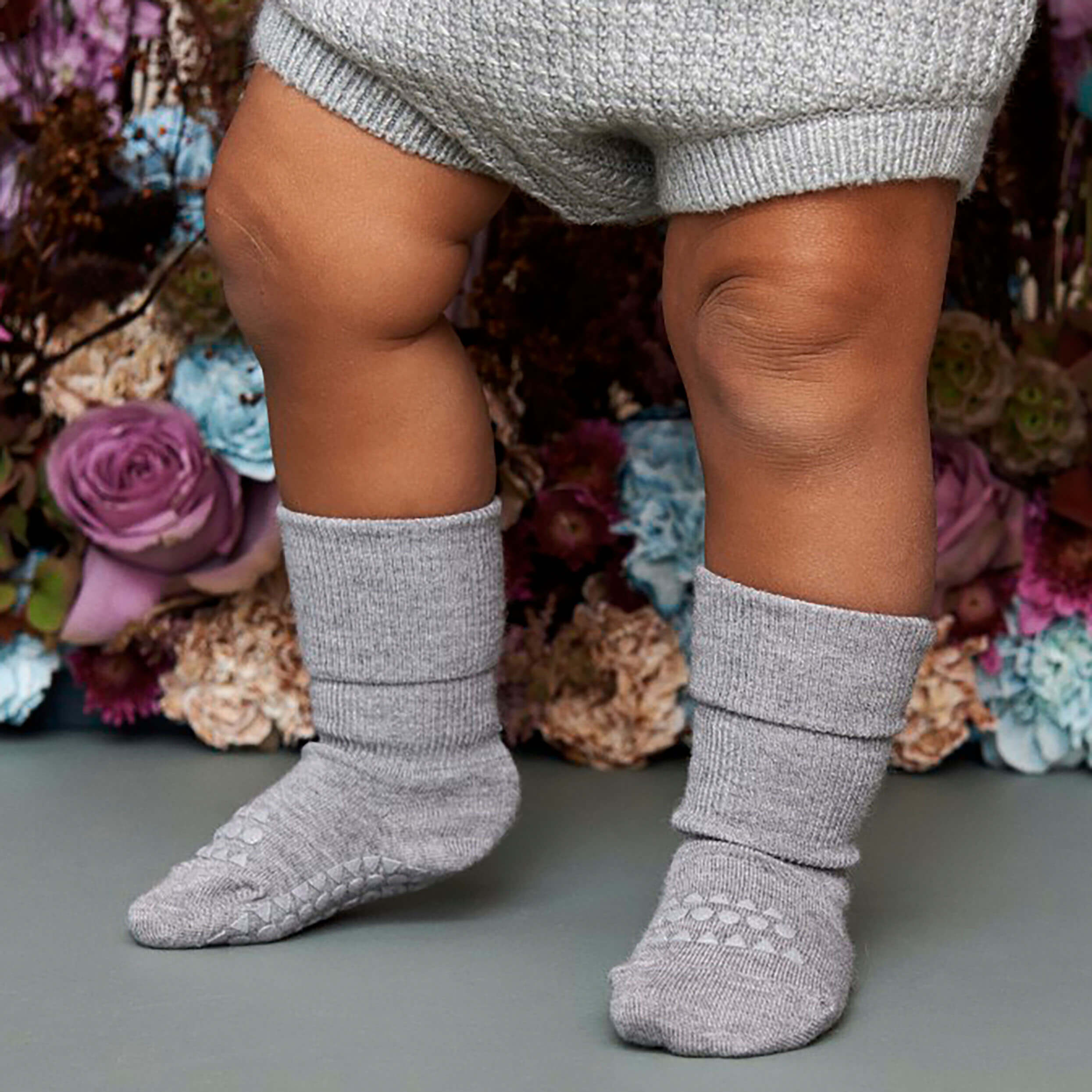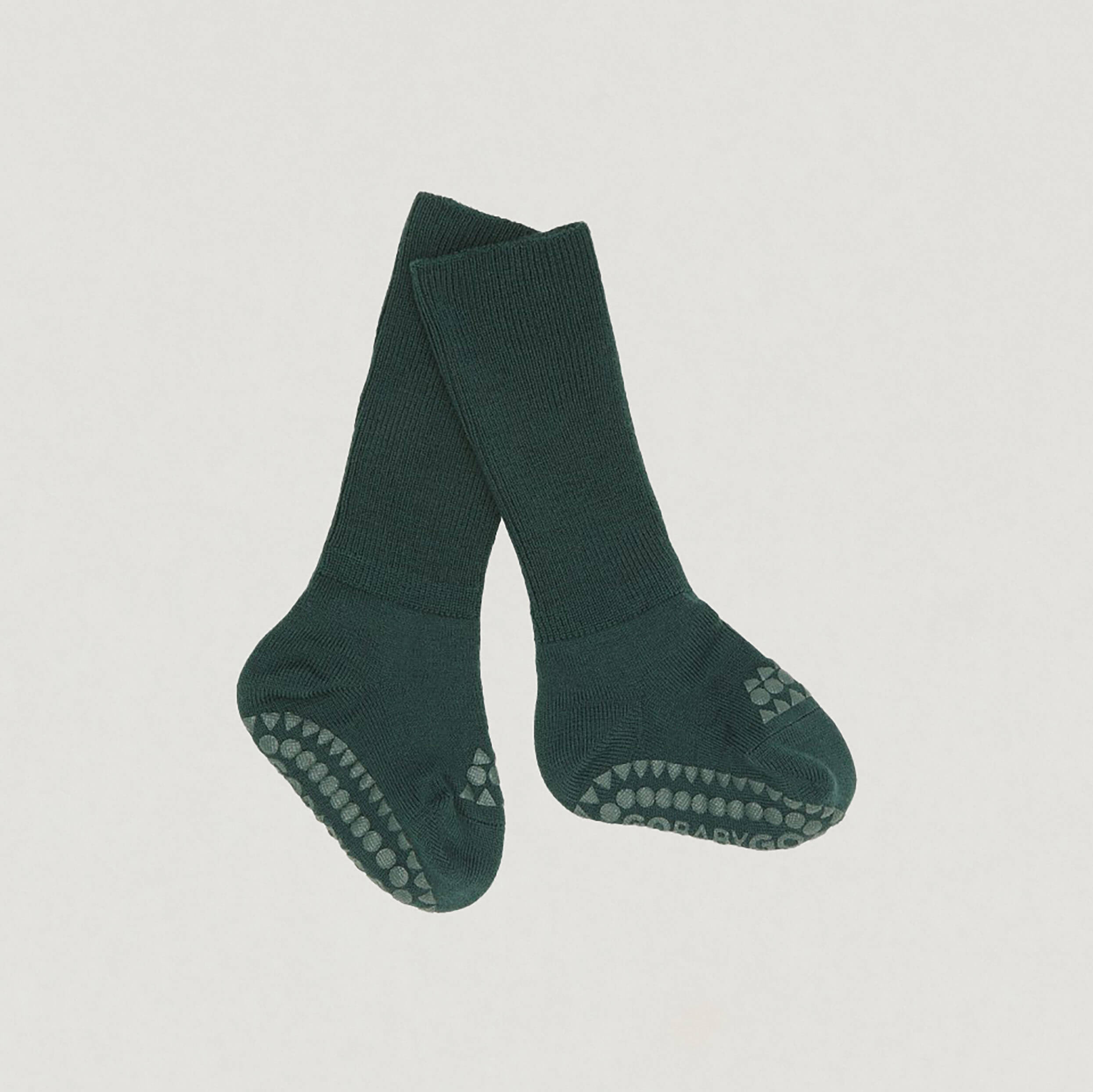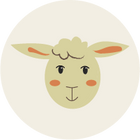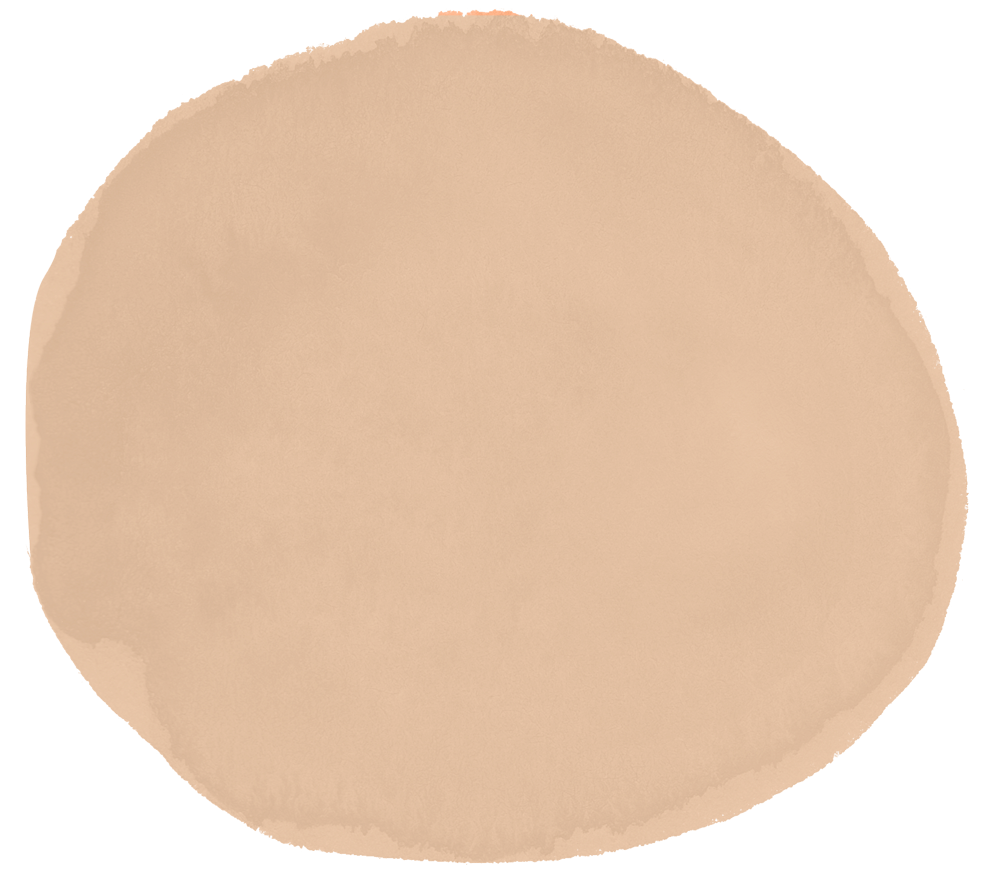




Go Baby Go
Wool socks with non-slip soles
GoBabyGo wool socks have non-slip pads under the feet and on the toes so that the child does not slip while learning to crawl and walk.
Benefits:
- Non-slip pads under the feet and on the toes provide stability on slippery surfaces
- Strengthens the child's motor skills, balance and self-confidence
- Made of soft Superwash temperature-regulating wool that feels comfortable on the skin and keeps the feet warm
- Designed with a long shaft and extra rib around the ankle so that they fit perfectly on an active little foot
- Tested for pollutants
- Danish design, made in Europe, and Oeko-tex Standard 100 certified
The wool socks are made of soft Superwash-wool, which is comfortable to wear and provides good movement and warmth for the child. Wool is temperature-regulating, so in a warm environment, the heat will be lead from the body to keep your child dry.
In a cold environment, the socks contain the heat produced by the feet to keep your child's feet warm. In addition, wool has a sun-protecting effect and acts as a natural UV filter. Wool can also absorb up to 30% of its own weight in water without feeling wet.
The wool socks with non-slip soles and non-slip nops on the toes make the baby more stable when it takes its first steps and at the same time keep the child warm.
Oeko-Tex Standard 100
GoBabyGo wool socks have been tested for pollutants and are Oeko-tex Standard 100 certified. The Oeko-Tex Standard 100 is a guarantee that the products have been checked for the content of harmful chemicals and that only organic textile products with no harmful effects on human health and well-being have been used in the production process. The non-slip silicone pads have also been approved following this standard.
Product Information
Material: 80% wool, 17% Polyamide, 3% Elastane
Sizes: 6-12 months & 1-2 years
The non-slip rubber pads are made from silicone and are free from phthalates
Wash inside out
Wool
Our recommendation to always read the care instructions in the respective garments, the special composition of the manufacturer and the origin of the materials often require individual care.
Merino wool and virgin wool
Manufacturers always recommend hand washing, cold and without temperature fluctuations, no wringing and rubbing of the garment. Basically, you should use a laundry bag for your wool laundry, this reduces the friction on the washing machine drum and thus the risk of felting. Textiles made of wool do not get dirty as quickly as cotton textiles, it is usually sufficient to air the textiles and only wash them when they are really dirty.
Always wash wool on the wool cycle and make sure the setting uses cold water, not 30 degrees. Basically, the older the washing machine is, the worse the wool program is, which can lead to problems. Also pay attention to the spin speed, it should be greatly reduced and no final spin should be set.
You should also use a high-quality, organic wool detergent and not a conventional one. Dry your woolen laundry lying on a towel and carefully pull it into shape after washing. Please never let your woolen clothes dry in the blazing sun, in the tumble dryer or on the radiator.
With our Joha and FUB products, we have had good experiences washing them at 30 degrees on a wool cycle. (but we do not assume any guarantee)
boiled wool
Consists of organic new wool, this wool should be gently cleaned. Wool has a high proportion of lanolin (wool fat). This wool fat gives boiled wool items their easy-care and dirt-repellent properties. In the case of light soiling, it is usually sufficient to shake out or brush out the boiled wool garments; the miracle brush is suitable here. Unpleasant odors will disappear if you hang your clothes out in the fresh air overnight.
For larger soiling, the manufacturer recommends washing the clothing inside out by hand. Virgin wool must not be wrung out and dried in the dryer.
Here, too, we as the BabyBox team have had good experiences with the cold wool washing program and clean our boiled wool parts in this way, of course we cannot guarantee this, as the manufacturer recommends hand washing.
Briefly summarized:
- Sort laundry by colour, temperature and material
- Heavy-duty detergents and color detergents are sufficient as standard detergents
- Pay attention to the manufacturer's instructions for the amount of detergent to be used
- Select the washing program according to the information on the label
- Make sure the drum is filled correctly
Briefly summarized:
- Drying in the fresh air is best
- Do not hang sensitive materials in direct sunlight
- Dry the knit flat
- Ensure good ventilation
Sock sizes at a glance
To help you, we have listed the EU sizes so that you can determine the correct sock size based on the foot length of your baby/child.
| sizes | Foot length in cm |
|---|---|
| 14 | 8.1-8.8 |
| 15 – 16 | 8.8-10.1 |
| 17 – 18 | 10:1-11:4 |
| 19 – 21 | 11:4-13:4 |
| 22 – 24 | 13:4-15:3 |
| 25 – 28 | 15.3 - 18.5 |
Temperatur regulierend durch die Wolle
Exzellente Passform die lange mitwächst
Mulesing-Frei zum wohl der Tiere
Faire Produktion in Europa
Tip
Wolle richtig Waschen
Die Pflege und das Waschen von Wolle bringt viele immer wieder zum zweifeln, ob Kleidung aus Wolle für Babys und Kinder das richtige ist. Unsere Empfehlung ein klares: Absolut!
Hier findet ihr unser Wissen und Erfahrungen zum Thema Wolle richtig waschen und pflegen, damit sich dieses Unwohlsein hoffentlich auflöst.

 Bodysuits
Bodysuits
 Pajamas
Pajamas
 Pants | Leggings
Pants | Leggings
 Romper | Jumpsuits
Romper | Jumpsuits
 Tops
Tops
 Jackets | Overalls
Jackets | Overalls
 Blankets | Sleeping Bags
Blankets | Sleeping Bags
 Hats & Co
Hats & Co
 Tights | Socks
Tights | Socks
 Burp Cloths & Co
Burp Cloths & Co
 Rattles & Toys
Rattles & Toys
 Changing Station Equipment
Changing Station Equipment
 Knitted Shoes
Knitted Shoes
 Crawling Shoe
Crawling Shoe
 First Walker Shoe
First Walker Shoe
 Accessories & Cleaning
Accessories & Cleaning
 Care Products
Care Products Health | Wellness
Health | Wellness Mama Accessories
Mama Accessories Literature
Literature Basic Deal
Basic Deal





